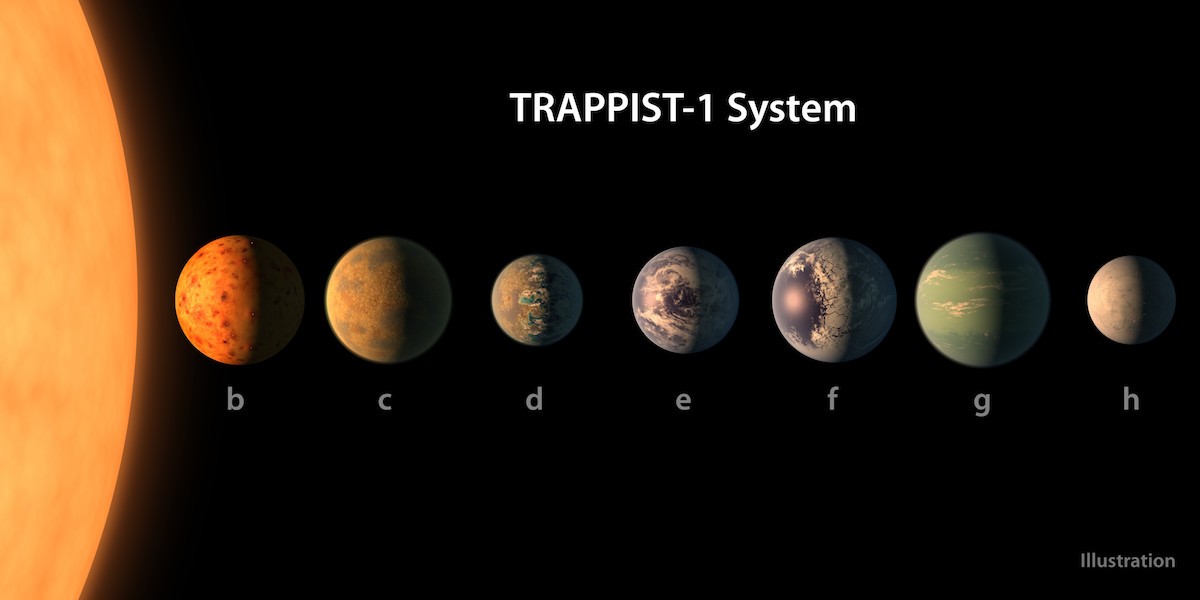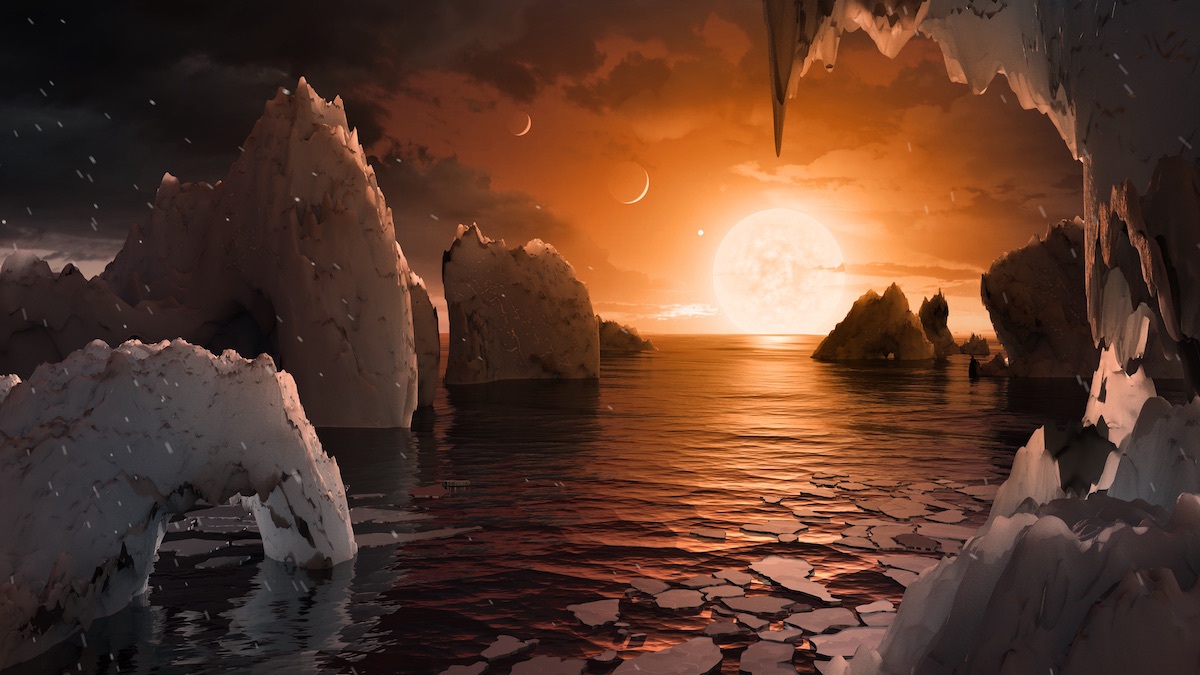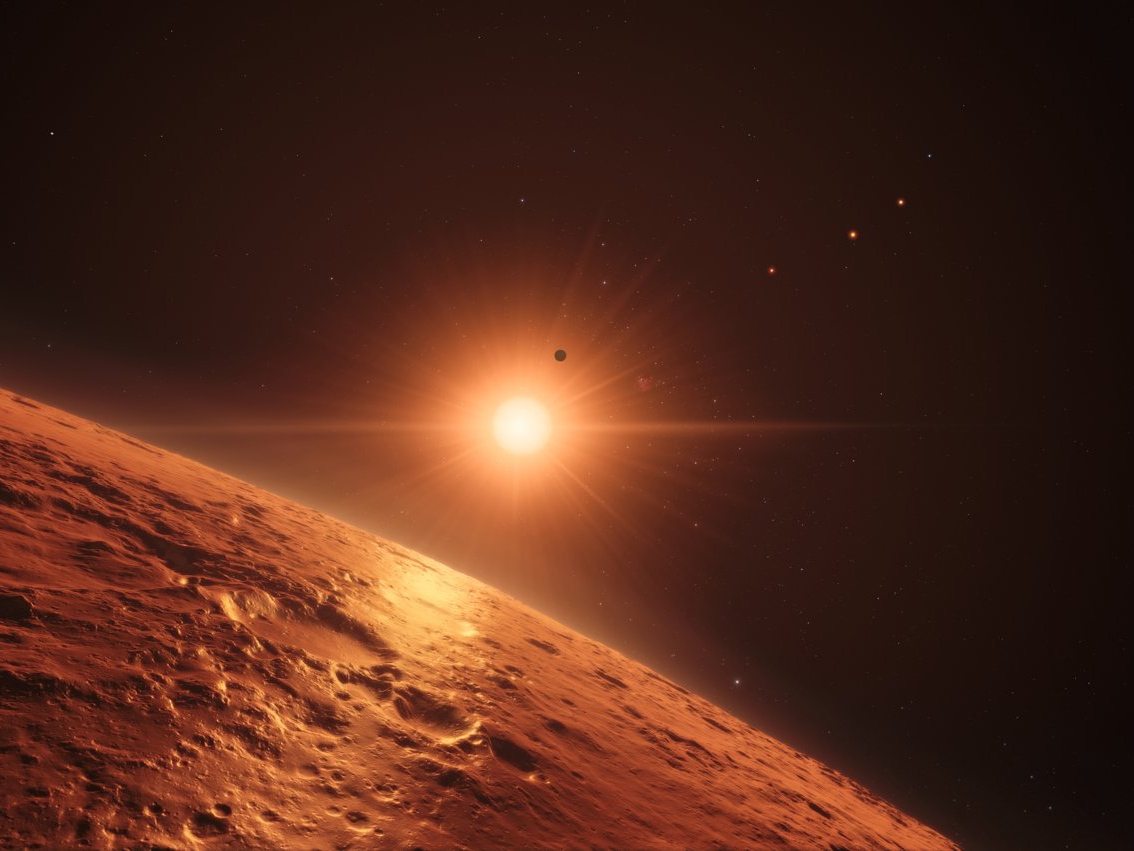
Last May, Geektimes published information that astronomers discovered several potentially habitable exoplanets rotating in orbits around an ultracold dwarf located 40 light years from Earth. The catalog name of the star is
2MASS J23062928-0502285 , it is eight times smaller than the Sun. And the planets of this system are always turned with one side to their star. According to scientists, the terminator line - the transition between the cold and hot zones, can provide quite comfortable conditions for the existence of protein life.
Usually, astronomers who search for earth-like exoplanets suitable for the existence of life take into account three important factors. This is a rocky solid surface of the planet, the distance from the star and the mass, which should be approximately equal to the mass of the Earth. The distance from the star must be such that water in liquid form can exist on the planet. The three planets of the TRAPPIST-1 system fit these criteria. But now there are new data that allow to cast doubt on the optimality of the conditions for maintaining protein life on these planets.
This data is the result of a 10-year study. For ten years, the team of the
Galaxy Evolution Explorer space telescope (GALEX) has studied red dwarfs (the star of this system belongs to this class). The telescope was launched in 2003 in order to study a part of the Universe with a size of 10 billion light years. The telescope scans outer space in the ultraviolet range.

Initially, the goal of this project was to study the evolutionary changes of galaxies and larger structures. But a number of scientists began to use the data obtained by the telescope to study red dwarfs. They found that this class of stars is characterized by frequent flashes. They are less powerful than flashes on our Sun, but since in such systems the planets are much closer to their luminary, these flashes most likely create conditions that are unsuitable for life.
“Outbreaks can carry the atmosphere away from the planet. This can happen on Earth-like planets, ”says Scott Fleming, an astronaut and scientist from MAST.
The Earth is well protected from similar phenomena on the Sun, and the planet itself is relatively far from the star, so that even the strongest flashes are unable to blow off our atmosphere or threaten life. But on the planets of red dwarfs everything is different. Here, even small flashes have a strong influence on planetary conditions.
Scientists who study red dwarfs according to GALEX work within the framework of the
gPhoton project. According to experts of the project team, flashes on red dwarfs occur very often. “We use datasets whose slices, the timeframes of which are just a few seconds, are the duration of a conventional micro flash on a red dwarf. We have recorded more than a hundred flares on some of the 10,000 observed stars over this period of time, ”says Fleming. In his opinion, this is a significant figure, albeit expected.
Thus, it can be assumed that red dwarfs regularly bombard the surface of their planets with streams of high-energy particles. And if this is true, complex organic structures simply cannot exist - they are destroyed. This applies even to not too complex compounds, not to mention such complex structures as RNA and DNA.

So, can you abandon the idea of finding life on planets orbiting around red dwarfs? No, there is still hope. If a planet has a rather thick and dense atmosphere, it may be less affected by flares appearing on its star than a planet with a less dense atmosphere. But, unfortunately, so far astronomers have practically no tools that allow us to estimate the density of the atmosphere on planets of other star systems that are distant from us. However, such a tool will soon appear - this is the Web Web space telescope named after James Webb (JWST).
So far, the team of scientists headed by Fleming only says that red dwarfs often flash. "We do not think that the planets that revolve around red dwarfs are uninhabited," says Fleming. But, of course, the data obtained by astronomers significantly reduces the likelihood of life on such planets.